City Focus: Marseille, France’s Second City
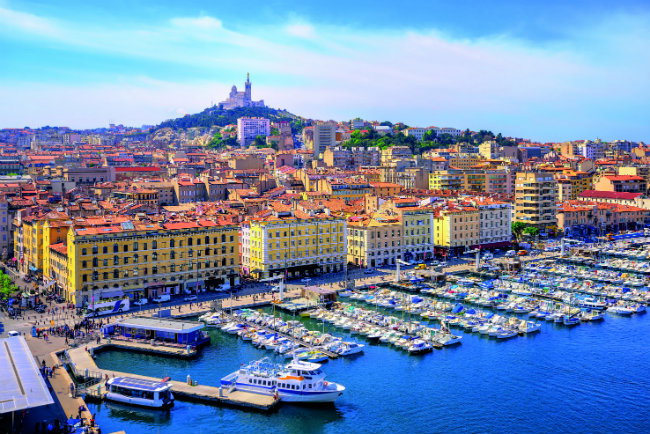
France’s second city is enjoying a resurgence, attracting visitors away from Provence’s more traditional tourist spots with its combination of arts, music, cuisine, architecture, shopping and edgy culture, says Dominic Bliss
“I see Armenians, Comorians, Italians, Algerians, Moroccans, Tunisians, Malians, Senegalese. But what do I see? I see citizens of Marseille, I see citizens of France.” So said Emmanuel Macron on a visit to Marseille during his presidential campaign. And he wasn’t wrong: after Paris, this is France’s second most cosmopolitan city. Walk down the streets and you’ll see all sorts of nationalities and ethnicities rubbing shoulders. In the ever-bustling squares and cafés you’ll hear Italian and Arabic spoken just as much as French.
All of which makes Marseille culturally richer than France’s other provincial cities. Its arts scene, its music, its architecture, its shops, its sport, its cuisine… all draw influence from all over the world, ensuring any visit is unforgettable for its diversity.

MUCEM. Photo credit: OT Marseille
In the old days, the French used to make jokes about poor Marseille, suggesting the crime and racial tension were so bad in the city, you’d be lucky to get out alive. Its reputation wasn’t helped by the infamous French Connection – the Corsican-run heroin trade in the 1960s that inspired the violent Hollywood film of the same name. Other crime-orientated films and TV series set here, such as Taxi, The Bourne Identity, The Transporter and Marseille, only reinforced the stigma. But that stigma is changing fast. Yes, of course Marseille still has its social problems, especially in the quartiers nord, which tourists are advised to avoid. But ever since the city was designated European Capital of Culture back in 2013, and received a much-needed injection of cash, it has discovered a newfound optimism and self-confidence.
Stroll around the Vieux Port, the city’s focal point, and you’ll see evidence of this. Fishing boats share the water with hundreds of pleasure yachts, while round the outside, tourists and locals enjoy the bars, cafés and restaurants. Standing sentry on either side of the harbour mouth are Fort Saint-Nicolas and Fort Saint-Jean, the latter linked via a 130-metre footbridge to the Museum of European and Mediterranean Civilisations, with its distinctive lattice cladding.
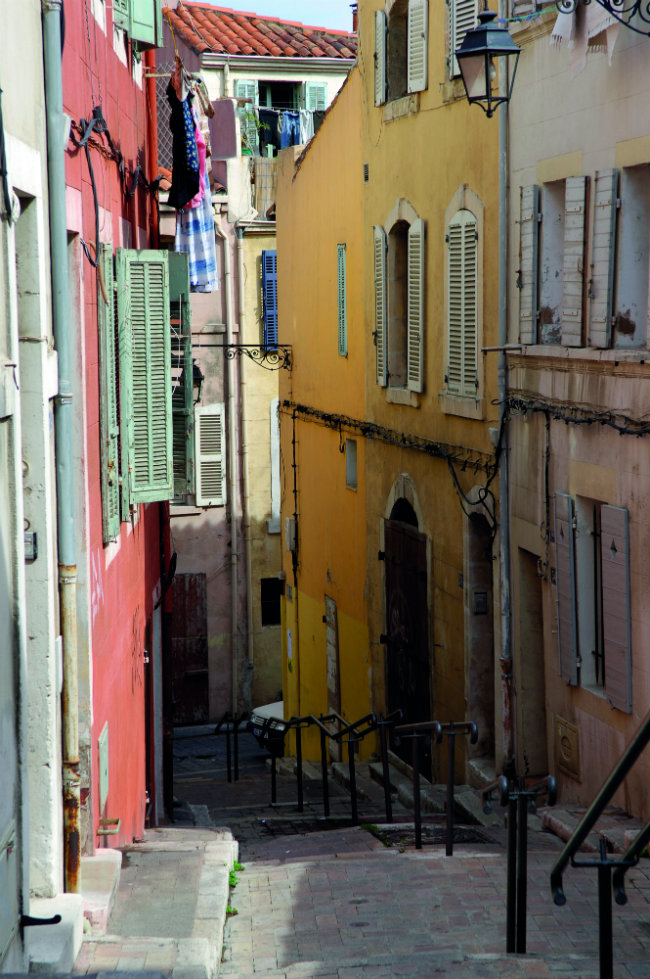
A steep narrow back street in Le Panier. Photo: OT Marseille
OLD AND NEW
On the north side of the port, you’ll enjoy losing yourself in the hilly streets, hidden squares and artisan shops of the city quarter known as Le Panier. Beyond this is the regeneration area Euroméditerranée, a district of forward-looking schools, public spaces, offices, shops and homes. On the port’s south side, take a deep breath and hike up the steep hill to Basilique Notre-Dame de la Garde, the 19th-century Romano-Byzantine church, which, at 162 metres above sea level, occupies Marseille’s highest point, and offers the best views across many of its 15 arrondissements.
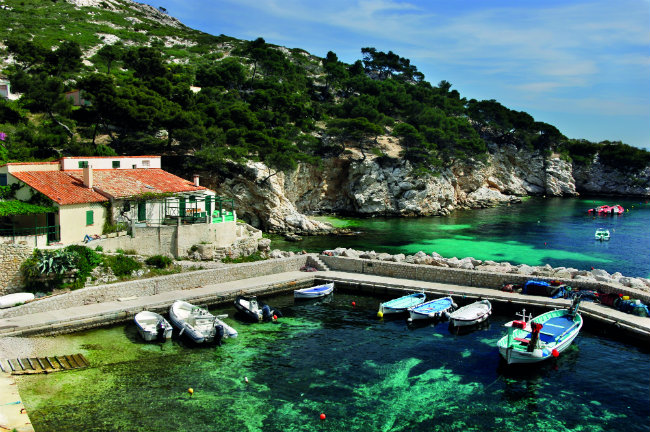
The Calanque de Sormiou is the biggest inlet in Marseille’s national park. Photo: OT Marseille
Naturally, though, your eye will be drawn to where the city meets the sea. Following the jagged, rocky line of the coast is a long and often very busy road called the Corniche Président John F. Kennedy. First it passes the tiny Plage des Catalans, the beach that’s within walking distance of the city centre. Then comes a cramped fisherman’s cove called Vallon des Auffes, where you can eat dinner above the bobbing fishing boats at the pizzeria Chez Jeannot or the pricier fish specialist Chez Fonfon. A few kilometres further south is the Parc Balnéaire du Prado, with its three beaches created from the original excavation of Marseille’s metro system. (They’re no Saint-Tropez or Cannes, but they’re a lot nicer than they sound.)
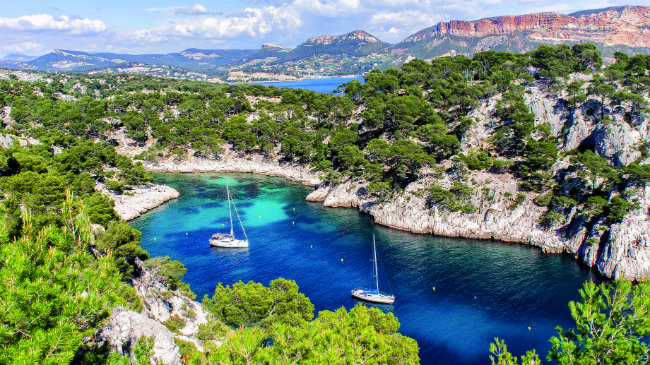
One of Marseille’s coastal calanques. Photo: Fotolia
Follow the coast road all the way to the city limits and finally you reach the Parc National des Calanques, over 200 square miles of protected sea, islands and mainland, with lots of tiny beaches, coves, cliffs and high rocky outcrops. Hiking, swimming, kayaking and sunbathing here is a favourite pastime for the Marseillais. One island archipelago that falls within the national park is Frioul, home to Île d’If and its fortress-prison Château d’If, forever famous thanks to Alexandre Dumas’s 1844 novel The Count of Monte Cristo. Boat trips from the Vieux Port will take you out to the island. While the fortress visit is hardly overwhelming, if you’ve read Dumas’s book, this grim former prison will give you an insight into the revenge that propelled his protagonist Edmond Dantès. And on a sunny day, the views back to Marseille are splendid.
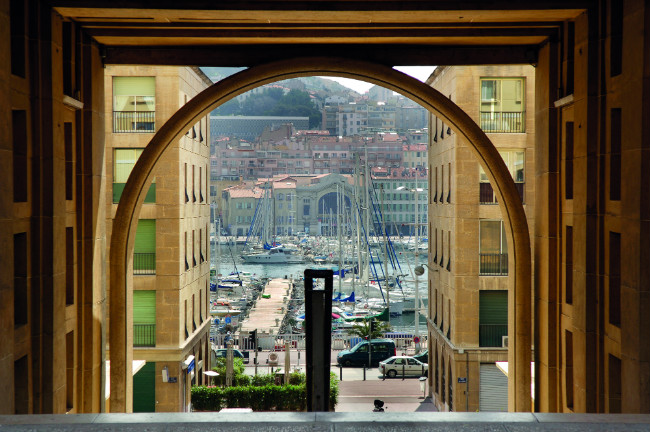
The Vieux Port as seen from rue de la Loge. Photo: OT Marseille
SPOILT FOR CHOICE
Heading back to the city, it’s now time to enjoy the myriad bars and restaurants on offer. Locals and tourists are inevitably drawn to the Vieux Port, especially rue Sainte, which runs parallel to the port’s southern edge. At the same time, be sure not to miss Cours Julien and the adjoining rue des Trois Mages, a kilometre or so east of the Vieux Port. If retail therapy is more your thing, enjoy the smarter shops on rue Paradis, rue Saint-Ferréol and rue de Rome, all to be found south of the big boulevard La Canebière.

Vieille Charité. Photo: OT Marseille
When it comes to Marseille’s cuisine, one tasty dish that will be thrust upon you at every opportunity is bouillabaisse. Chefs can never agree on the correct ingredients, nor the methods to prepare, cook or serve it. Essentially it’s a fish-and-seafood stew with tomatoes, onions, white wine, garlic mayonnaise, fennel and croutons. First you boil it (bouillir) fast and furiously, then you lower (baisser) the heat for the rest of the cooking process.
Some chefs add mussels, lobster and langoustines, while others see this as sacrilege. Some include potatoes, which others would stab you with a paring knife just for suggesting it. Waiters argue over whether it should be served as two courses: soup first, or all together with soup poured regularly over the fish to keep it hot. What’s great about this dish is that however many times you order it, you’ll never get the same version. Some claim it’s symbolic of the city’s human population – all thrown together in one big melting pot. American food writer Richard Olney, who spent most of his life in Provence, perhaps summed up Marseille’s signature dish best of all, and we’ll leave the last word to him.
“Bouillabaisse is, to tell the truth, more of a philosophy than a culinary preparation,” he wrote in The French Menu Cookbook. “It embodies and engenders the warmth, the excitement and the imagination which, perhaps, of all the Mediterranean peoples, the Provençaux exude in the highest degree. At best, it belongs to the realm of divine things.”
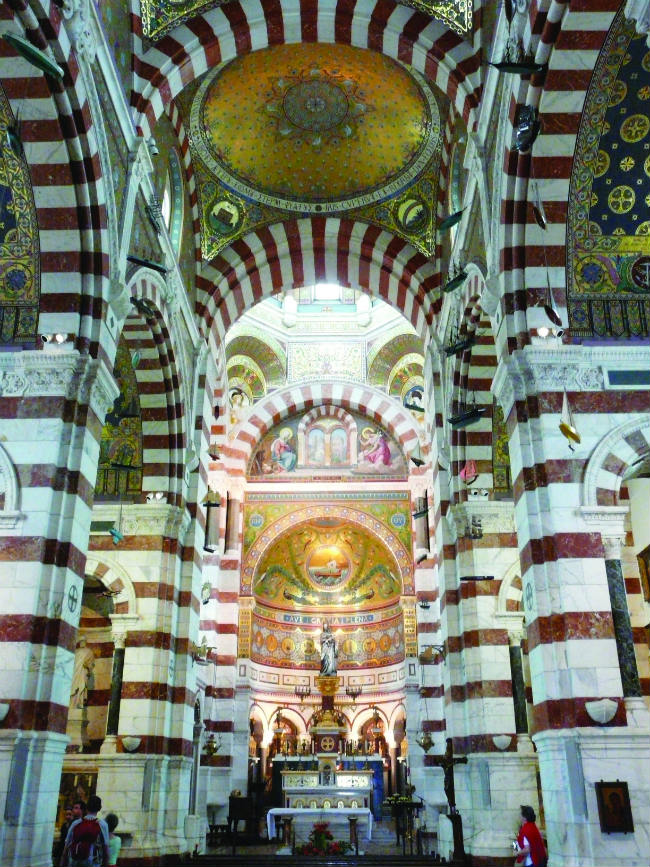
Interior view of the Basilica of Notre Dame de la Garde. Photo: OT Marseille
5 MUST-SEE ESSENTIALS IN MARSEILLE
CHÂTEAU D’IF
The Château d’If is on an archipelago off the coast of Marseille and is a lot less ominous today than it was when Alexandre Dumas described it in his famous novel The Count of Monte Cristo. Boat trips will take you out to visit this former prison, offering not-to-be-missed views of Marseille each way. www.chateau-if.fr
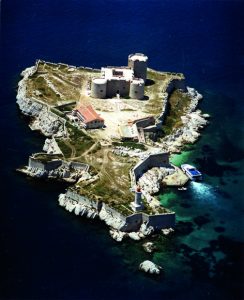
Château d’If. Photo: OT Marseille
MUCEM
The Musée des Civilisations de l’Europe et de la Méditerranée, to use its full name, loosely focuses on the art, culture and history of Europe and the Med. Within this lattice-clad building, there have been exhibitions on subjects as diverse as food, religious idols, Algeria, graffiti, gold, Picasso and football. After a visit, walk across the footbridge that links the museum to Fort Saint-Jean. www.mucem.org
BASILIQUE NOTRE-DAME DE LA GARDE
At 162 metres above sea level – the highest point of Marseille – sits the impressive Notre-Dame de la Garde, a 19th-century basilica whose most intriguing aspects are the gold Virgin and baby atop the bell tower, and the models and murals depicting shipwrecks, house fires and car crashes from which said Virgin has protected believers. Enjoy amazing views across the city. www.notredamedelagarde.com
LES CALANQUES
New York has Central Park, London has Richmond Park, Paris has Bois de Boulogne. In Marseille, if you want to escape the hustle and bustle, head out to the Parc National des Calanques, over 200 square miles of protected sea, islands and mainland, with beaches, coves, cliffs and rocky hills to explore. There are boat tours, kayak tours and guided walks. Or you can simply take two buses (19 and then 20) from the city centre and strike off on your own.
OLYMPIQUE DE MARSEILLE
Marseille’s top football club occupies the thoughts and conversations of most Marseillais nearly all of the time. To understand the quasi-religious appeal of l’OM, you need to visit Stade Vélodrome, their home ground since 1937. www.orangevelodrome.com/en/visits/
From France Today magazine

Stade Vélodrome, the home ground of Olympique de Marseille. Photo: OT Marseille
Share to: Facebook Twitter LinkedIn Email
Leave a reply
Your email address will not be published. Required fields are marked *




REPLY